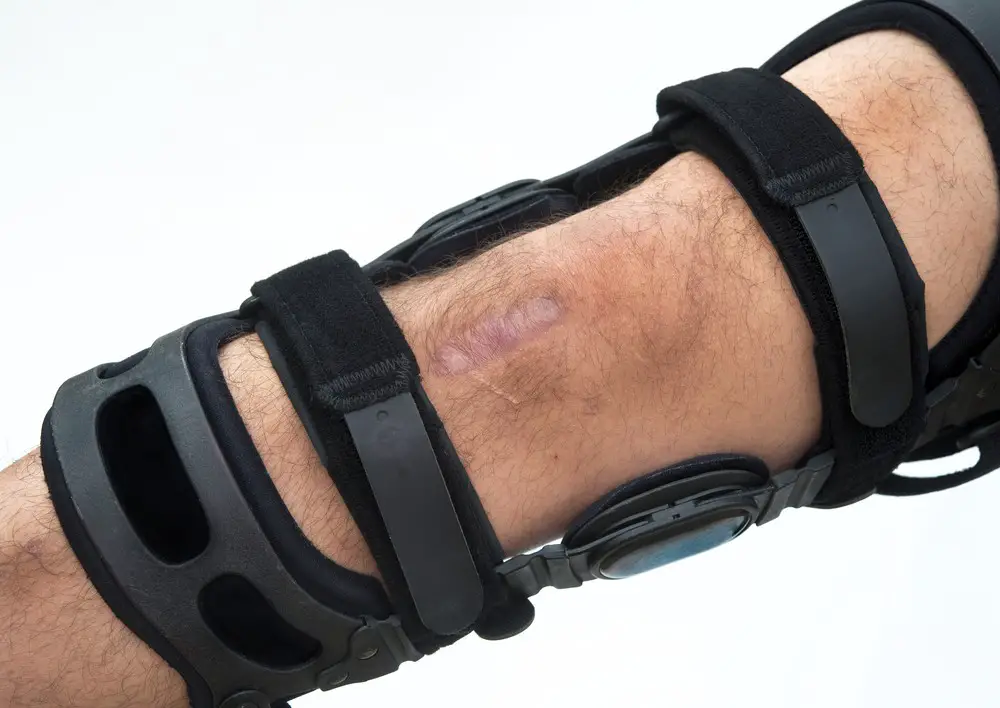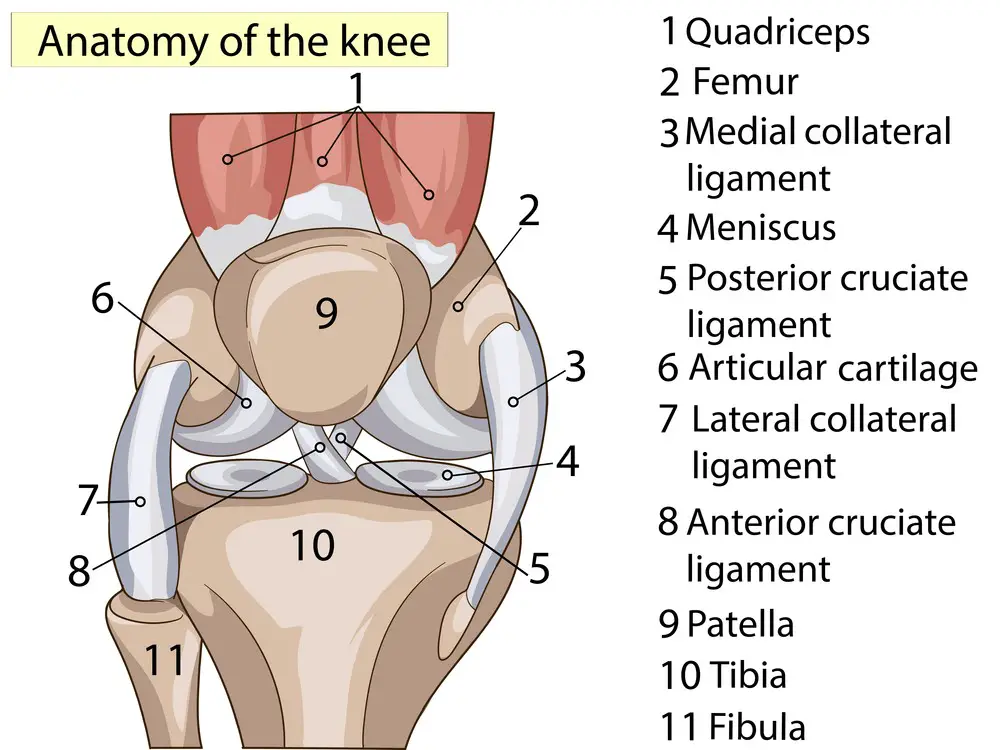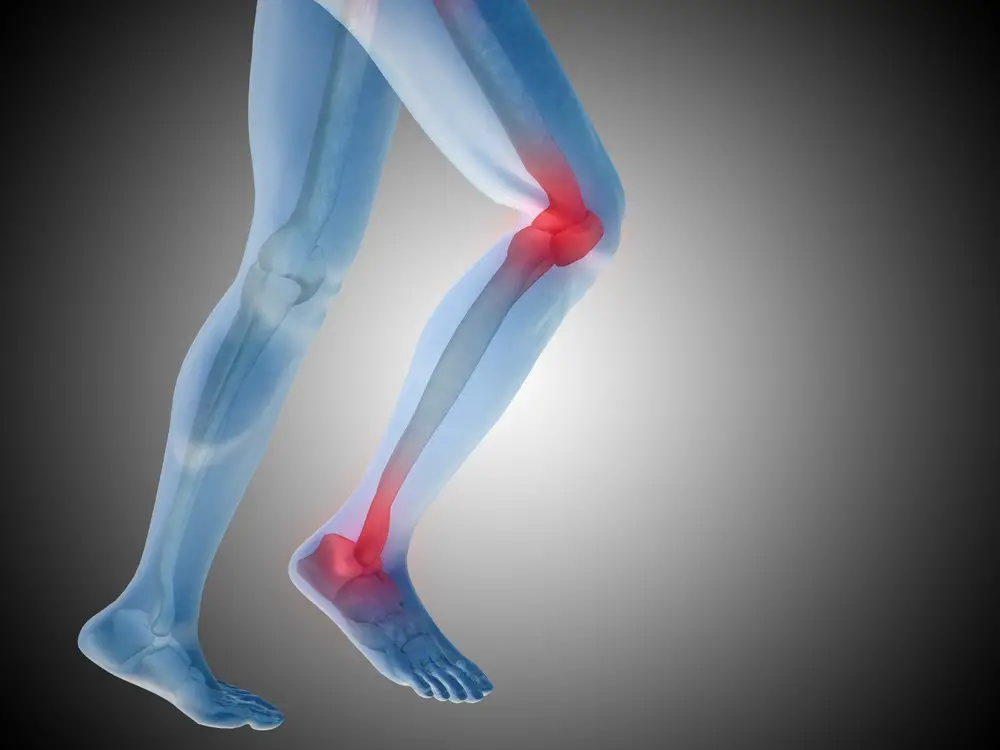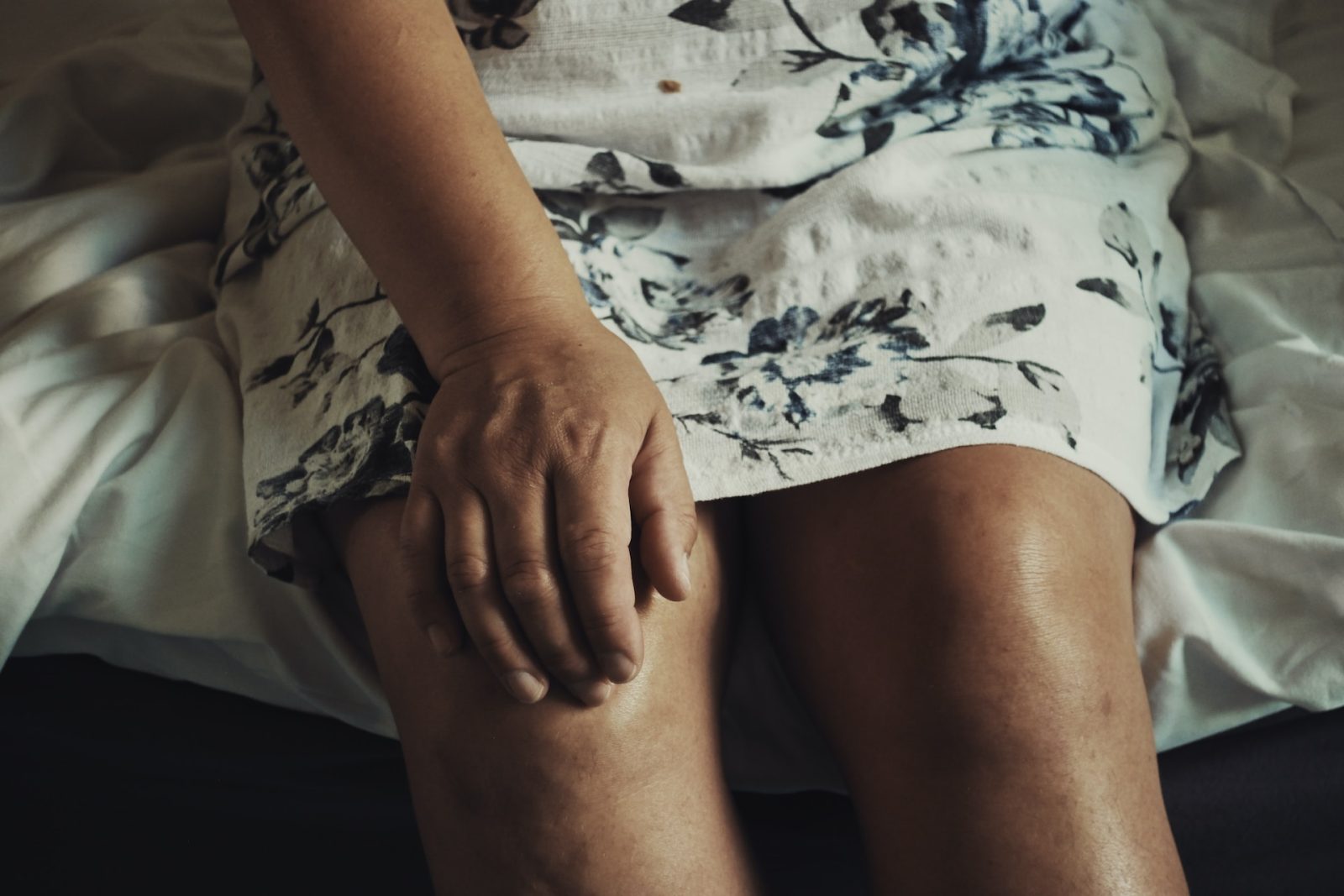As a BetterHelp affiliate, we receive compensation from BetterHelp if you purchase products or services through the links provided
Recovering from ACL surgery can be a challenging process, and one of the key components of a successful recovery is getting adequate sleep. Post-operative sleep disturbances are common, and understanding how to improve sleep quality after ACL surgery is essential for a swift return to normal activities.
While pain and discomfort may be expected following surgery, knowing how to sleep correctly and creating a comfortable sleep environment are crucial steps in healing. This article discusses effective strategies for better sleep post-ACL surgery, including the importance of maintaining the right sleep position, establishing a relaxing sleep space, and coping with sleep-related challenges during recovery.
Key Takeaways
- Proper sleep position and environment are essential for post-ACL surgery recovery.
- Addressing sleep disturbances can speed up the rehabilitation process
- Being informed and prepared can help alleviate sleep issues and support healing
 Understanding ACL Surgery
Understanding ACL Surgery
ACL surgery, or anterior cruciate ligament surgery, is performed to repair or replace a torn ligament in the knee. The anterior cruciate ligament is one of the four main ligaments in the knee, and it plays a crucial role in providing stability and preventing excessive motion. ACL injuries are common among athletes due to sudden stops, pivots, or awkward landings.
There are two primary types of ACL surgery:
- ACL reconstruction: This is the most common surgery for an ACL injury. It involves using a graft (a piece of tissue from another body part, such as the patellar tendon or hamstring tendon) to replace the damaged ligament. The graft is then anchored to the bones in the knee using screws or other fixation devices.
- ACL repair: This is a less common procedure typically reserved for individuals with specific injury patterns, such as an ACL tear near the femoral attachment site. During an ACL repair, the surgeon attaches the torn ligament to the bone using sutures or other fixation methods.
After the surgery, patients usually undergo a comprehensive rehabilitation program, which includes physical therapy, exercises, and potentially using a knee brace. Rehabilitation aims to gradually restore strength, stability, and mobility to the knee, allowing patients to return to regular activities.
Patients must follow their surgeon’s instructions and adhere to the rehabilitation plan to ensure a successful recovery from ACL surgery. This may include avoiding certain activities and movements that could cause additional strain on the healing ligament and gradually increasing the intensity of exercises over time.
In conclusion, ACL surgery is a common treatment for knee ligament injuries, primarily for those involving the anterior cruciate ligament. With appropriate surgical intervention and a commitment to rehabilitation, many patients can return to their pre-injury activity level and enjoy a stable, functional knee.
 Post-Surgery Symptoms and How to Handle Them
Post-Surgery Symptoms and How to Handle Them
Pain Management
After ACL surgery, patients often experience pain and discomfort in the affected area. To manage pain, it’s essential to follow the prescribed pain medication plan the healthcare professional provides. This may include over-the-counter pain relievers, prescription opioids, or a combination. Ensure to take pain medication as directed and never exceed the recommended dosage. In addition to medications, incorporating relaxation techniques such as deep breathing and visualization can help reduce pain and stress.
Dealing with Swelling
Swelling and inflammation are common symptoms after ACL surgery, which can limit mobility and movement in the knee. Patients are encouraged to apply ice packs and elevate the affected leg to minimize swelling. Compression bandages or a knee brace may also be recommended to provide additional support and manage swelling. If inflammation persists, patients should consult their healthcare provider, and any adjustments to treatment plans should be made if necessary.
Managing Sleep Disturbances
Sleep disturbances are common after ACL surgery, often caused by pain, swelling, or limited mobility. Patients should establish a bedtime routine and maintain a consistent sleep schedule to improve sleep quality. Creating a comfortable sleeping environment with proper support and positioning is also crucial. A knee brace may be beneficial to keep the leg stable and secure during sleep. Patients should consult their healthcare professional for potential adjustments to their pain management plan if pain or discomfort persists.
The Right Sleep Position Post-ACL Surgery
Sleeping on Your Side
One comfortable sleeping position after ACL surgery is sleeping on your side. Place a pillow between your knees to maximize comfort and support, keeping your legs slightly bent. This helps to maintain the natural alignment of your spine, hips, and legs. Additionally, using a pillow to support your upper arm can prevent unnecessary strain on your shoulders. Avoid resting on the side with the surgery, which may cause discomfort and prolong the healing process.
Sleeping on Your Back
Another effective sleep position post-ACL surgery is sleeping on your back. This position may be more comfortable for some individuals, as it allows the surgical site to be free from pressure. Elevate your injured leg by placing a few pillows under your knee, creating a slight inclination. This elevation aids in reducing swelling and improving blood circulation around the surgical area.
Use a supportive pillow under your neck to maintain proper spinal alignment to enhance comfort in this position. Establishing a relaxing bedtime routine, such as dimming lights or engaging in deep breathing exercises, can also contribute to a restful sleep after ACL surgery.
Comfortable Sleep Environments Post-Surgery
Proper Use of Brace and Equipment
After an ACL surgery, creating a comfortable sleeping environment is crucial to promote healing and recovery. One important aspect is the proper use of the brace and equipment your healthcare professional provides. Wearing an ACL brace during sleep can help stabilize the knee joint, prevent unwanted movement, and minimize the risk of further injury. It is essential to follow the instructions given by your doctor or physical therapist and adjust the brace as needed to ensure a secure and comfortable fit.
In addition to the brace, elevating the affected leg can reduce swelling and improve blood circulation. Position a few pillows or a specialized leg wedge under the calf area to achieve the necessary elevation. Furthermore, using ice packs on the knee in timed intervals can help alleviate pain and inflammation. Make sure to wrap the ice pack in a towel or cloth to avoid direct contact with the skin and prevent frostbite.
Importance of Furniture Selection
Choosing the right furniture is another vital aspect of creating a comfortable sleep environment post-ACL surgery. A reclining chair or an adjustable bed can provide the necessary support and allow the patient to find a comfortable sleeping position without putting strain on the surgical site. These pieces of furniture often come with adjustable features, allowing you to elevate your legs or adjust the backrest to a suitable angle. This added flexibility provides better control over body positioning, ensuring a more restful sleep.
If a reclining chair or adjustable bed is unavailable, patients can still modify their sleeping surfaces using pillows and cushions. Place cushions under the knee and calf area to maintain proper knee alignment, ensuring that the ligaments and muscles can heal without unnecessary tension. Experiment with various cushion placements to find the most comfortable configuration for your body.
In conclusion, creating a comfortable sleep environment is essential for a smooth ACL surgery recovery. Ensuring the correct use of a brace and equipment and selecting appropriate furniture will significantly improve sleep quality, which is crucial for the healing process.
 Recovery and Rehabilitation Process
Recovery and Rehabilitation Process
Physical Therapy
During rehabilitation, physical therapy plays a crucial role in helping the patient regain stability and mobility in their knee. Patients should attend all scheduled appointments with their physical therapist, as each session is vital for managing pain and improving range of motion. Typically, physical therapy begins one week after surgery and continues for several months.
Therapists provide exercises tailored to each patient’s specific needs, gradually increasing the difficulty and intensity as healing progresses. Following the therapist’s recommendations and regularly performing prescribed exercises at home is essential for better results. Using crutches and other mobility aids may be necessary during the initial weeks of recovery to provide additional support and stability.
Proper Blood Circulation
Post-operative care for ACL surgery patients should also prioritize proper blood circulation to reduce the risk of blood clots and promote healing. Patients are encouraged to elevate their legs, keeping the knee slightly higher than the heart. This position can be achieved by propping the leg on pillows while resting on the back or stomach.
Patients should perform ankle pumps and foot circles several times a day to further promote blood circulation. These exercises involve gently pumping the foot up and down and rotating the ankle in slow circles. Healthcare providers may also recommend compression stockings to help minimize the occurrence of blood clots. Ensuring proper blood circulation can significantly contribute to a successful recovery and reduce potential complications.
In conclusion, the recovery and rehabilitation process after ACL surgery involves a combination of physical therapy, adhering to post-operative care instructions, and prioritizing proper blood circulation. By addressing these aspects, patients can better manage pain, regain stability and mobility in their knees, and ultimately pave the way for a successful recovery.
 Dealing with Sleep Issues
Dealing with Sleep Issues
Insomnia Post-Surgery
After ACL surgery, some patients may experience insomnia due to factors such as pain, anxiety, and discomfort in the knee region. Addressing these sleep disturbances is essential to promote restful sleep and speed up the healing process. Here are some strategies to help combat insomnia:
- Create a comfortable sleep environment: Ensure the bedroom is cool, quiet, and dark, and invest in a supportive pillow and mattress.
- Establish a regular sleep schedule: Going to bed and waking up consistently can help regulate the body’s internal clock, promoting better sleep.
- Incorporate relaxation techniques: Deep breathing, guided imagery, and progressive muscle relaxation can help reduce anxiety and calm both the mind and body.
Use of Sleep Aids
In some cases, sleep aids may be necessary to address post-surgery insomnia. It’s important to consult with a healthcare professional before using any medication or supplement. Here are some common sleep aids that may be recommended:
- Over-the-counter antihistamines: Antihistamines like diphenhydramine and doxylamine succinate can help induce drowsiness and decrease sleep disturbances. However, use them cautiously as they may cause daytime drowsiness or dependency if used for an extended period.
- Prescription sleep medications: For short-term insomnia, doctors might prescribe medications like zolpidem, eszopiclone, or zaleplon. These medications should only be taken under a physician’s guidance and for the prescribed duration.
- Natural sleep aids: Supplements like melatonin, valerian root, or chamomile tea can help promote relaxation and improve sleep quality. Always consult with a healthcare provider before trying any herbal or natural remedies.
It’s essential to monitor any side effects, such as fever or worsening sleep disturbances when using sleep aids. Additionally, combining non-pharmacological approaches like relaxation techniques and creating a comfortable sleep environment can help achieve restful sleep post-ACL surgery.
Frequently Asked Questions
How do you sleep comfortably after ACL surgery?
To sleep comfortably after ACL surgery, finding a position that relieves pressure on the knee and provides adequate support is essential. Using pillows to cushion and elevate the leg can help reduce swelling and discomfort. Also, maintaining a consistent sleep routine and creating a calm environment can help improve sleep quality during recovery.
What are the best positions to sleep in post-ACL surgery?
The best positions to sleep in after ACL surgery are typically on your back or the non-operated side. When sleeping on your back, place a pillow under the knee to support and maintain a slight bend. If sleeping on your side, use a pillow between your knees to keep the operated leg aligned and avoid any twisting.
Can I sleep on my stomach after the operation?
Sleeping on your stomach immediately after ACL surgery is generally not recommended, as this may place undue strain on the affected knee and potentially disrupt the healing process. Consult your surgeon for specific recommendations on when it might be safe for you to sleep in that position.
How long should I elevate my leg while sleeping after knee surgery?
Elevating your leg while sleeping after knee surgery can help reduce swelling and promote blood flow. It’s advisable to keep your leg elevated for the first few days to a week post-surgery or as your surgeon directs. Sleeping with your leg propped on pillows in a position that maintains a slight bend in your knee helps achieve this.
Is it OK to sleep on your side after the procedure?
Yes, sleeping on your side after ACL surgery is generally acceptable, preferably on the non-operated side. Using a pillow between your knees can help maintain proper alignment and prevent strain on the affected knee. However, always consult your healthcare provider for personalized advice on sleep positions during your recovery.
When can you start sleeping normally after ACL surgery?
The timeline for resuming normal sleeping patterns after ACL surgery varies for each individual and depends on factors such as pain management, swelling, and progress in physical therapy. Following your surgeon’s guidance and recommendations regarding your specific recovery needs is essential. Most patients can return to regular sleep positions within a few weeks to a few months post-surgery.
- Breaking the Silence: Why Men’s Mental Health Matters More Than Ever - April 15, 2025
- How to Transform a Home’s Patio Space into a Relaxing Space - March 23, 2025
- 5 Strategies to Use a Cell Phone to Help Manage Your Stress - March 23, 2025
This site contains affiliate links to products. We will receive a commission for purchases made through these links.


 Understanding ACL Surgery
Understanding ACL Surgery Post-Surgery Symptoms and How to Handle Them
Post-Surgery Symptoms and How to Handle Them Recovery and Rehabilitation Process
Recovery and Rehabilitation Process Dealing with Sleep Issues
Dealing with Sleep Issues
